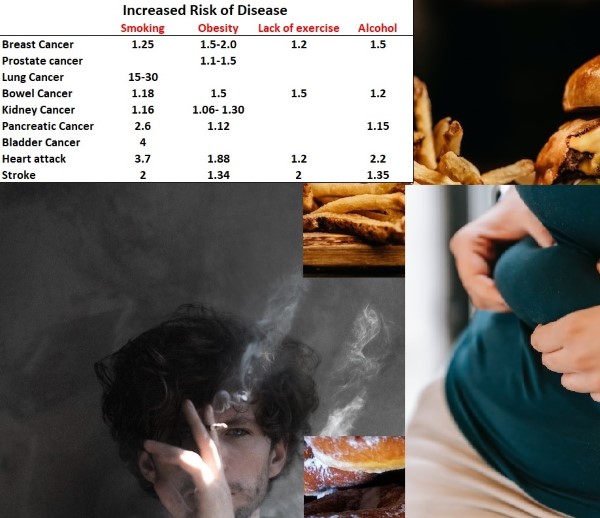
Universal risk factors are those that affect people across all regions, cultures, and backgrounds. They include smoking, poor diet, physical inactivity, alcohol consumption, environmental pollution, infections (like HPV or hepatitis), genetic predispositions, and exposure to radiation, including UV rays from the sun.
Tobacco use is the single largest preventable cause of cancer worldwide. It is responsible for about 22% of cancer deaths globally. Smoking increases the risk of lung, throat, mouth, pancreas, bladder, and many other cancers.
Yes. A diet high in processed foods, red meats, and low in fruits and vegetables can raise cancer risk. Obesity, often driven by poor diet, is also a major risk factor for cancers such as breast, colon, kidney, and liver cancer.
Certain viruses, bacteria, and parasites are linked to cancer development. For example, HPV (Human Papillomavirus) is strongly associated with cervical cancer, and hepatitis B and C viruses are linked to liver cancer.
Absolutely. Air pollution, exposure to industrial chemicals, and contaminated drinking water can all contribute to cancer risk. This is a growing concern, especially in urban and industrial areas worldwide.
Genetics play a role, but inherited mutations account for only 5–10% of all cancers. Lifestyle and environmental factors are far more significant in most cases.
Avoid smoking, maintain a healthy diet, exercise regularly, limit alcohol, get vaccinated against cancer-causing infections, practice sun safety, and attend regular medical screenings.
Universal risk factors are factors that lead to multiple diseases. There are many causes of disease; some that we know about and many that we don’t know about; some we were born with- our DNA; and others we acquire or are exposed to. Some of this we have no control over like our age and gender and other diseases; some we control in conjunction with others, our occupation, and the environment and yet some others, we largely have only ourselves to blame.
Generally speaking, age is by the greatest risk factor for disease, as we and insurance companies know only too well, though no one is really satisfied with their age, being either too young or too old or both. We all know what constitutes a healthy lifestyle but perhaps aren’t aware of the multiple risks associated with certain lifestyle choices. The risks are based on large, published studies, though they are approximate as such figures are not easy to generate from studies and there is considerable geographical variation. Many cancers share common pathways in the initial mutations that lead to their development and so there is common ground in the causative lifestyle factors. These factors also increase the risk of atherosclerosis (furring up of the arteries) which can increase the risk of heart disease and stroke.